Yacht crew safety culture and well-being
Lloyd’s Register on why the industry needs to go beyond compliance and focus on human-centred safety.…
The superyacht industry has long been associated with luxury, precision and impeccable service. However, beneath the surface of this glamorous world lies a crucial element that demands attention: safety culture and crew well-being. While regulations and evolving technology contribute significantly to maritime safety, the real challenge lies in shifting from a compliance-driven mindset to one that embraces a human-centered approach to safety and operational efficiency.
In light of recent incidents: a renewed focus on safety
In light of recent high-profile incidents within the yachting community, safety has once again become a critical focal point. While human error is often cited as the primary cause of accidents, deeper investigations frequently reveal a more complex interplay between people, processes and technology. This reality compels us to ask:
Do we truly understand the safety level of our industry? And on what basis do we claim to know it?
With thousands of yachts navigating the world’s waters, the number of serious incidents may appear relatively low. However, every accident represents a missed opportunity to learn, improve and prevent future tragedies. Rather than responding reactively after disaster strikes – prompting yet another wave of regulations – it is time to adopt a proactive, data-driven approach to safety.
History has shown us the cost of inaction. From the Titanic to the Herald of Free Enterprise and the Torrey Canyon, change has too often come at the expense of human lives. Lloyd’s Register (LR) proposes a different path – one that sets a new benchmark for safety culture within the yachting sector.
To achieve this, LR is conducting a comprehensive safety culture survey across seagoing yachts and their management companies. This initiative aims to measure and compare safety practices, identify areas for improvement and provide actionable insights to strengthen our industry’s safety framework.
Having successfully led similar initiatives across other maritime sectors, LR is committed to driving this effort forward – but we cannot do it alone. Industry-wide participation will be crucial. We urge yacht owners, operators, management companies and crew members to contribute their perspectives, helping us shape a safety culture that is not only robust but also deeply ingrained in our industry’s values.
The survey can be accessed here.
Lloyd’s Register’s Global Yacht Segment Director Engel-Jan de Boer states: “Together, we have an opportunity to redefine safety standards – not through reactive regulation, but through informed, collaborative action. The journey to a safer future starts now. Let’s embark on it together.”
A staggering 80 per cent of maritime accidents are attributed to human error, with the remaining 20 per cent still involving human involvement. But is this truly human error or is it a failure to design systems that account for human capabilities and limitations?
Moving beyond regulatory compliance
Historically, the industry has followed a reactive pattern – accidents lead to new regulations, which in turn create a perception of safety. However, this approach is flawed. Regulations alone do not make a yacht safer. Safety is achieved through real actions, effective leadership and a proactive safety culture that extends beyond checklists and mandatory compliance.
Classification societies, along with Flag and port states, play a role in ensuring safety standards. However, the onus should not rest solely on them. Builders, manufacturers, suppliers, management companies, captains and crew must all actively contribute to creating a safer environment on board. It is not enough to rely on rules; rather, the industry must emphasise decision-making, crew empowerment and intelligent design to foster an intrinsic culture of safety.
The role of human factors in safety
A staggering 80 per cent of maritime accidents are attributed to human error, with the remaining 20 per cent still involving human involvement. But is this truly human error or is it a failure to design systems that account for human capabilities and limitations? Research has shown that designing for operation and maintainability can significantly reduce costs and improve efficiency while enhancing safety.
Many accidents stem from inadequate consideration of human factors in yacht design and operations. Issues such as fatigue, poor ergonomics, insufficient training, communication breakdowns and ship-shore conflicts all contribute to unsafe environments. Addressing these challenges requires an approach that prioritises human-centered design – fitting the task to the human, rather than expecting humans to adapt to flawed designs and processes.
The power of behaviour-based safety
Behaviour-based safety (BBS) is an approach that emphasises modifying actions and attitudes to enhance overall safety performance. This cultural shift starts at the top – with yacht managers and captains leading by example – and filters down to the crew and even guests. Superyacht crew often prioritise guest experience, but safety should be seamlessly integrated into this experience, not treated as a separate or secondary concern.
Creating a safety-conscious environment means ensuring that every person on board understands and respects potential risks. While checklists and procedures are necessary, an over-reliance on rigid control mechanisms can be counterproductive. If a crew member follows a checklist exactly but lacks the awareness to recognise an emerging hazard, the safety system has failed. Instead, empowering crew members through training and trust allows them to exercise judgement based on experience and situational awareness.
Learning from incidents: a culture of transparency
Incident analysis and transparency are critical for improving safety culture. The superyacht industry tends to report only major accidents that trigger Flag-state investigations, but this approach means valuable lessons from near-miss incidents are often lost. Encouraging the reporting and sharing of minor incidents and close calls can help prevent major disasters by addressing risks proactively.
A shift toward openness in learning from incidents and near-misses would enable the industry to build a more robust safety culture. If safety is seen as a shared responsibility rather than a burden of compliance, superyachts can set new benchmarks for excellence not only in luxury but also in well-being and operational integrity.
Conclusion: A call for human-centred safety
Regulations will always play a role in maritime safety, but they are not the ultimate solution. True safety comes from integrating human factors into yacht design, fostering a behaviour-based safety culture, and ensuring that crew well-being is a top priority.
By moving away from a regulatory mindset and towards a proactive, human-centered approach, the superyacht industry can redefine safety.
This article first appeared in The Superyacht Report – Owners Focus. With our open-source policy, it is available to all by following this link, so read and download the latest issue and any of our previous issues in our library.
NEW: Sign up for SuperyachtNewsweek!
Get the latest weekly news, in-depth reports, intelligence, and strategic insights, delivered directly from The Superyacht Group's editors and market analysts.
Stay at the forefront of the superyacht industry with SuperyachtNewsweek
Click here to become part of The Superyacht Group community, and join us in our mission to make this industry accessible to all, and prosperous for the long-term. We are offering access to the superyacht industry’s most comprehensive and longstanding archive of business-critical information, as well as a comprehensive, real-time superyacht fleet database, for just £10 per month, because we are One Industry with One Mission. Sign up here.
Related news
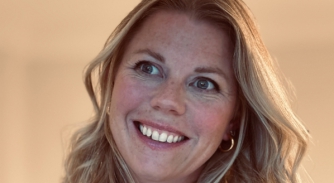
Crew spend their whole careers trying to come ashore … why I went the other way
Emily Beck, Director at The Build Purser, explains the vital role of purser and her decision to move from an onshore position to one at sea
Crew
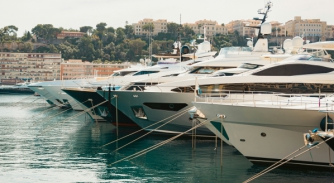
Regulations and compliance – meeting standards that matter
With systemic issues plaguing the industry, Emma Gillett, founder and CEO of SeaFeedback, raises a call for compliance to be held to a standard that must be met
Crew
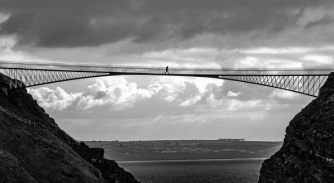
Bridging the gap: The human side of superyacht operations
Marianne Danissen at Camper & Nicholsons explains how knowledge sharing can help alleviate the demands of crew life while raising industry standards
Crew
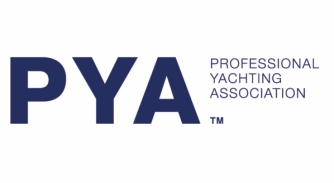
PYA – the voice of yacht crew
A reminder from the CEO of PYA, Christophe Bourillon, of the fundamental behind-the-scenes role the organisation plays in yacht crew representation
Crew
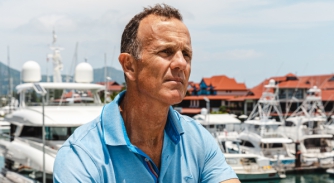
The value in crisis
In this interview, Brendan O’Shannassy calls for a values-based revolution to future-proof the industry and reclaim its potential
Crew
NEW: Sign up for
SuperyachtNewsweek!
Get the latest weekly news, in-depth reports, intelligence, and strategic insights, delivered directly from The Superyacht Group's editors and market analysts.
Stay at the forefront of the superyacht industry with SuperyachtNewsweek



